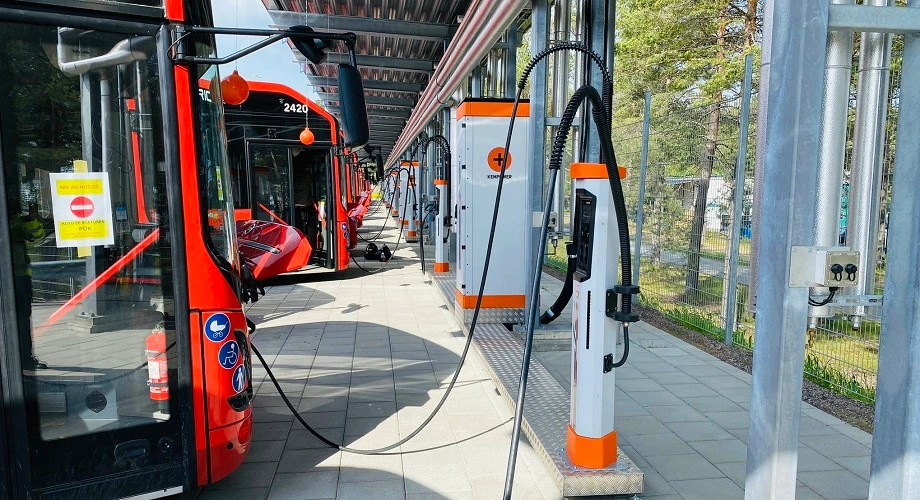In light of the increasing electrification of bus fleets, Kempower provided its recommendations to make fleet charging management a safe and profitable business.
These suggestions were offered by Armand García Bachs, Sales Manager for Commercial Fleets in Iberia and Latin America, and Moritz Vornfeld, Owner of the Fleet Segment of the firm.
When operating a small fleet, it is possible to manage them similarly to diesel buses.
“You can even use an Excel spreadsheet to plan the charges,” they explained.
However, when dealing with a large number of units, between 50 and 100 vehicles, it becomes necessary to completely rethink the operation.
Charging multiple buses poses challenges related to capacity, space, and charging operations.
These challenges need to be addressed with solutions such as dynamic energy management, multimodality, and efficient software.
Furthermore, early planning and system integration are crucial for the success of operations.
Here are Kempower’s three recommendations:
Route management and bus availability are crucial
Ensuring that all vehicles are fully charged or at least sufficiently charged for their morning routes is essential.
The key here is optimizing operations and the need for software that can intelligently manage the charging according to a scheduled timetable.
Furthermore, the software should support re-conditioning of units to ensure they are ready in the morning.
Charging should be efficient and safe, and an effective software system should be capable of detecting issues and notifying them in a timely manner for resolution.
Managing energy demand and pricing
In some countries, there are maximum demand charges that should be avoided. It’s essential to distribute electrical charging over time to avoid consumption peaks.
An effective management system should be capable of optimizing charging in line with energy rates and operational needs.
Plan software architecture and system integration from the outset
A solid strategy should consider scalability and integration with existing systems such as fleet management and power systems.
Communication between systems is “vital” for efficient operations.
Europe Sees an Increase in Electric Buses
Over the past two years, Europe has witnessed a 61.6% increase in the electrification of bus fleets.
While in 2021 there were a total of 6,333 units, today, according to data collected by Chatrou CME Solutions, the total number of emission-free urban buses in Europe exceeds 10,200 vehicles.
Currently, the United Kingdom, Germany, and the Netherlands lead the transition of transport fleets towards electromobility on the continent.
“The adoption of electric buses is becoming the norm,” the company comments.
In fact, in the first quarter of 2023, sales of battery electric buses in the United Kingdom surpassed diesel sales for the first time.
Kempower states that “it is a notable trend.”
“If we analyze the proportion of bus sales, we can see that some countries, like the Netherlands and Denmark, are not buying new diesel vehicles at all but are opting for alternative fuels,” they explain.
Indeed, the discussion in the transportation sector is not the acquisition of electric buses but rather the optimization of their operation.
While charging capacity and facility location largely depend on the country and location, some common guidelines can be provided.
For example, in Amsterdam, the Netherlands, depots are located outside the city and can therefore accommodate a large number of vehicles.
However, in other cities like London, space is limited, posing additional challenges as the units need to be closer together.
More about Kempower
Kempower is a family-owned company based in Finland.

The family has had experience in electrical technology for several decades, but it was in 2017 when they decided to venture into the world of charging and become part of the mobility sector.
“Since then, it has been an incredible journey,” the company comments.
In the first half of this year, Kempower reported revenues of £128.2 million, considering that about six years ago, they were a “static company with no income.”
“Our revenues increased by 287%. We’ve seen a similar increase in recent years, with 596 employees. I think that number goes up every other weekend,” explain García and Vornfeld.”







